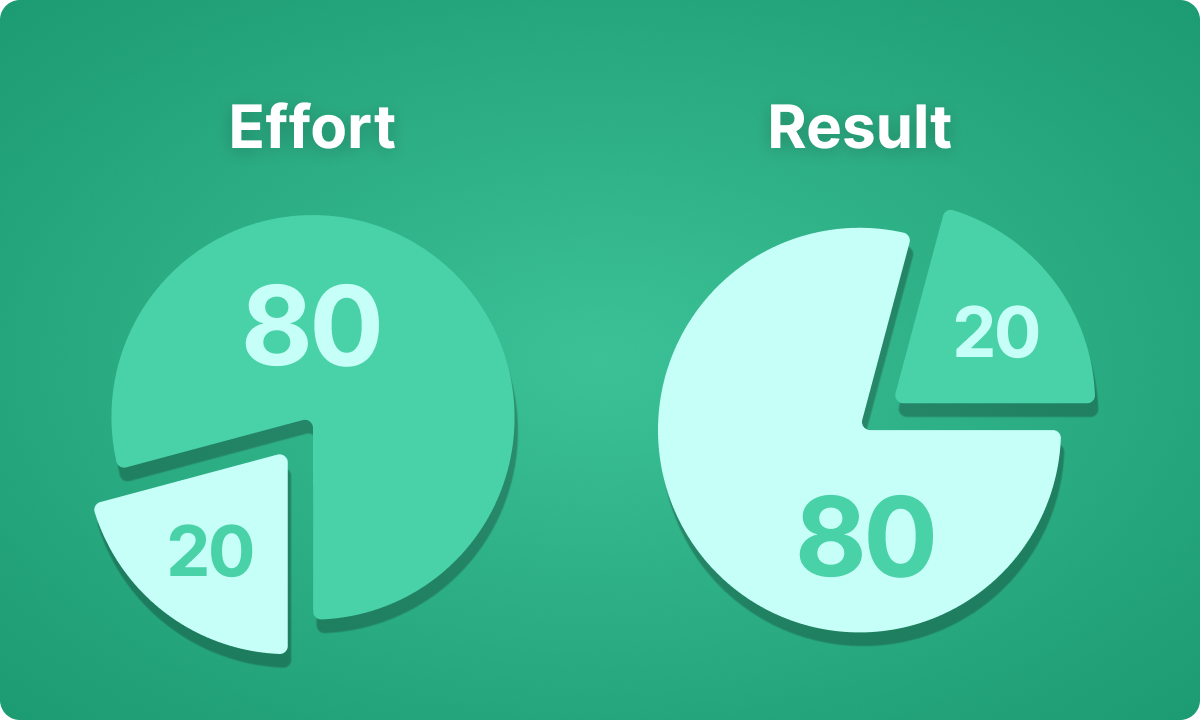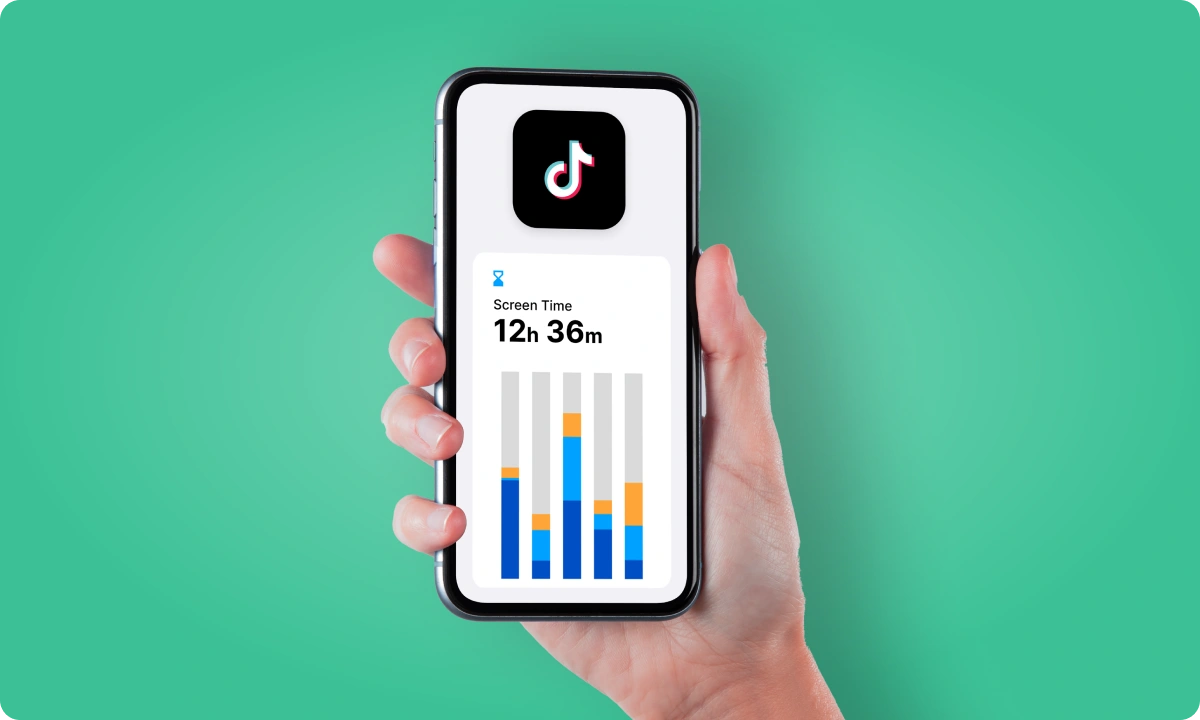Ever felt stuck, like you’re putting in loads of effort and only seeing a trickle of results? Well, apply the Pareto Principle, otherwise known as the 80/20 Rule, and just forget that feeling. The principle shows how 80% of results usually come from only 20% of efforts being made. Can you believe it? Understanding and applying this concept can really shake up the way one runs tasks and time for a pathway of high efficiency with less stress. It is somewhat analogous to finding that cheat code for productivity, and who would not want that?
As we get into the details of the Pareto Principle, you will realize how it brings about clearer focus, letting you know when it is worth your time. By the end, you might just look at productivity in a whole new light.
What Is the Pareto Principle?
The Pareto Principle is also known as the 80/20 Rule, which describes the phenomenon: 80% of the results usually come from 20% of efforts.
This means that in simple terms, most often, a small portion of your tasks or inputs generates the bulk of your results. By focusing on those few high-impact tasks, you will find that you can achieve much through less effort.
Think of it this way: in your daily workload, all tasks are not made equal. Some of those activities are no more than fillers; others are heavy hitters that drive major outcomes. You may have noticed that getting only a couple of the key activities done seems to make you feel like you’ve had a wildly productive day. That’s the 80/20 Rule in action. Applying it means shifting your focus to the tasks that genuinely move the needle and ignoring the less impactful ones whenever possible.
Origin of the Pareto Principle
This concept was first introduced by Vilfredo Pareto, an Italian economist, back in the year 1896 while studying the distribution of wealth in Italy. Pareto found out that 20 percent of the population owned 80 percent of the land. But this observation did not stop here within the boundaries of wealth distribution; it extended into all walks of life concerning business and economics, and even personal productivity.
Could Vilfredo Pareto have ever imagined the worldwide implications of his apparently simple observation?. Starting with the land ownership in Italy, it now spills over into all walks of life and work. It could be the argument that a small fraction of customers account for most of the sales or that some features in software drive most user activity. The 80/20 Rule never misses the beat. But how does this principle apply to your jammed-up schedules and full-to-overflowing lists of tasks? Let’s look deeper into that.
Benefits of using the 80/20 Rule
The 80/20 Rule can produce phenomenal increases in productivity and efficiency. These are some of the best benefits that can be derived from it:
Greater efficiency
You can maximize your efforts by knowing and concentrating on high-impact tasks. This is because you are using time and resources to pursue relevant activities, spending your energies on those few tasks—the 20% that produce 80% of the outcomes. This work style establishes a lean workflow that lets you ultimately achieve much more with less effort.
Better time management
You will be able to manage your time wisely if you focus on high-impact tasks. You are focusing on the activities that really matter, those that are driving your success. You’ll then have time to do the other important things in your life or work. This new way of time management will let you balance all sorts of responsibilities without being overwhelmed and feeling more organized and productive in your daily activities.
Improved outcomes
Attention to the vital few allows you to produce results better with less effort and time. Since it focuses on what really counts, you can be assured of quality work in the attainment of set goals more efficiently. And because your attention is on key tasks, your efforts are likely to yield big things that will move you forward into your career or personal projects.
Less stress
It creates a much more balanced approach toward work and life, as low-value tasks will only contribute to feelings of overwhelm and stress. If you stop bothering about things that mean little to you, then the mental load and pressure from keeping everything on track will start to lessen. This paring-down of your to-do list will keep your workload manageable; thus, you would be able to maintain a better, healthier work-life balance.
Disadvantages of the 80/20 Rule
Though the 80/20 Rule has various advantages, it also has some disadvantages, which include:
Ignoring minor tasks
By paying attention to only high-impact tasks, minor but significant tasks might be overlooked, which someday might add up. While the 80/20 rule allows shortlisting tasks to only those having the most effect, that is not an indicator of the fact that minor tasks do not matter at all. When you put these tasks aside, it eventually builds up to be counterproductive.
For example, administrative tasks, regular maintenance, or minor customer requests may not be so vital in the short term, but are very important for the smooth running of operations and long-term success.
Overconcentration on top performers
Through the application of the 80/20 principle in business, it may lead to overconcentration on star clients or products and the sidelining of others that do contribute to overall success. Such selective focus can result in an imbalanced approach, where inordinately large allocations are made to only the top 20% of clients or products.
New emerging clients, niche products, or potential new markets could therefore go by unheeded, as the opportunities they offer would be missed and growth stunted. An inclusive strategy should treat all business segments as important.
Misunderstanding the Rule
People have often misunderstood the 80/20 Rule as ‘20% effort with 80% results.’ In reality, 100% of your effort goes to the right 20% activities producing results. With this kind of a flawed interpretation, what is implied is laxity—that low effort will deliver the goods.
This principle underlines the fact that you should recognize serious high-impact activities and commit to them 100%. Misinterpretation fosters half-hearted attempts at key tasks which could badly undermine your productivity and effectiveness.
How to use Pareto’s Principle
You can apply Pareto’s Principle using this step-by-step guide:
- Identify Key Tasks: List all of the activities and identify what 20% produces 80% of your results. Looking at past performance often shows trends and can help identify the activities that yield high returns.
- Prioritize: Prioritize these tasks in your daily workflow. Make a list of key tasks and place them at the top of your to-do list.
- Allocate Resources: Allocate your time, energy, and resources toward these critical tasks. Make sure that you have good coverage on these prioritized activities.
- Delegate or Eliminate: Delegate the less critical tasks to others or get rid of them. In many instances, it has been found out that this delegation or elimination can free up a lot of time and resources.
- Review Continually: Keep reviewing your priorities and priorities further so that your focus remains on the high-impact activities. Periodic review may help you in keeping on track.
Pareto Principle examples
Here are some practical examples of the Pareto Principle:
Business revenue
Typically, 80% of revenue a company generates comes from 20% of its clients. Now, focus on these customers alone, and see how dramatically profits increase. In that direction, developing relations with high-value clients improves bottom-line results for businesses.
Software bugs
In the development of any software, 80% of user complaints usually arise from 20% of bugs. Fixing them will enhance the user’s experience to a great extent. This approach most often makes the application much smoother and more reliable.
Marketing campaigns
80% of all engagement can often be driven by 20% of all marketing efforts. Understanding which are the key efforts can help in optimizing a campaign for better efficiency and drive better performance metrics.
Personal finance
20% of expenses can make up 80% of a monthly budget. Tightening control over these expenses can significantly improve financial health. This means recognizing and regulating high-spending categories, translating potentially to savings.
How to Use Pareto Principle for productivity
Here are a few ways the Pareto Principle can help you become more productive:
Task management
The first principle of task management is to apply the Pareto Principle and complete the tasks with the greatest effects first. If there are 10 items on your to-do list, ask which will give you the most significant feeling of satisfaction for completing them. These are your high-yield activities, and you want to work on them.
Resource allocation
Allocate the resources at high-impact areas. General resources like time, money, and people have to be aligned in attaining tasks that are prioritized.
Goal setting
Goals that realize high returns should be set. Focal goals bring out clear direction and clarity to efforts and responsibilities.
Continuous improvement
Periodically evaluate and prioritize tasks to ensure continuous productivity. Periodic goal review meetings help keep efforts focused on maximum potential outcomes.
Here’s a tip: BlockSite helps you implement this best practice by blocking all of those very distracting sites so you can make sure that every minute counts.
You can add distracting websites and even apps to your list so that you won’t lose your focus.
And speaking of focus, there’s also the Focus Mode feature that you can use to set your work time and break intervals for blocking.
Manage and optimize your time better
The Pareto Principle is a very powerful framework for raising work productivity by concentrating on impactful tasks. By examining your workload, readjusting priorities to key activities, and having BlockSite to eliminate distractions, it can strongly improve the quality of your work. Learn to shift your strategies and you will begin realizing much more by working less. Start applying this principle, improve its efficiency with BlockSite, and transform your approach toward work and life—that is how you’ll get greater satisfaction in what you do.
FAQ
How can I start using the 80/20 Rule today?
Start by identifying and listing down all of your activities and then make a decision about which gives you the best result. Then, focus your energy on increasing the time spent on that activity and delegate other activities.
What tools can help me maintain focus?
Such tools include BlockSite, which can be used to minimize the occurrence of distractions, either through the computer or through your mobile devices. This allows you to enjoy the ability to concentrate on the essential focus areas you have identified.
Can you use the 80/20 Rule in team projects?
Yes, expend more effort and time on tasks or endeavors that are of higher value to the project. Allocate the work based on the strengths and high-impact abilities in the team.
Does the 80/20 Rule apply to financial management?
Yes, concentrate on fewer investments or expenditures that make the most significant returns and cut down on the ones that don’t present much value.
How can I use the 80/20 Rule to declutter my life?
Identify your possessions and retain the 20% that gives you maximum satisfaction and utility. Then, get rid of the remaining 80% with little value. You can even give or donate these so they will have more purpose.





